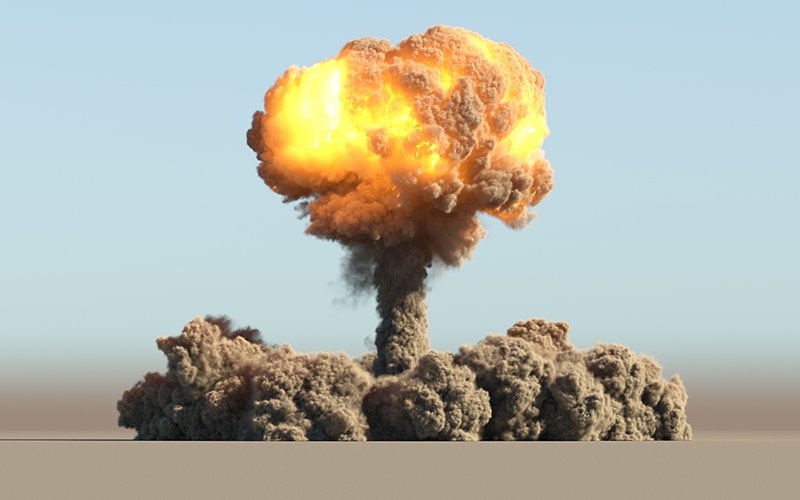On websites where policy makers, scholars, and military leaders collect, concern with the possibility of nuclear war has been growing sharply in recent decades as China, the United States, and Russia build new weapons and new ways of using old ones.
About War on the Rocks, an internet platform for national safety articles and podcasts, Tong Zhao, a senior fellow in the Carnegie-Tsinghua Center for Global Policy, reported August 11 on public calls in China “to quickly and massively build up its nuclear forces” on the theory that only a “more robust nuclear posture” could avoid war with the United States.
The largest nuclear weapons funding ever is nearing approval in the US Congress, and the Trump government has raised the possibility of resuming nuclear tests. President Trump has attracted the United States from the1987 Intermediate-Range Nuclear Forces (INF) treaty by Russia, although the New Start Treaty capping Russian and U.S. nuclear warheads and delivery methods is set to expire next February if the two countries don’wont consent to expand it.
For its part, Russia appears poised to equip its navy using hypersonic nuclear strike weapons, and in accordance with the British newspaper The Independent, “The Russian highest has spoken of his wish to develop a new generation of nuclear weapons which can be targeted everywhere on Earth. ”
Meanwhile, momentum to block the proliferation of nuclear weapons has faltered. Nine nations now hold nuclear weapons within an increasingly unsettled international scene. Recent research has indicated that a foreign exchange between just two of those with lower arsenals–India and Pakistan– ldquo;could directly kill roughly 2.5 times as many as expired globally in WWII, and in this nuclear warfare, the deaths could happen in a single week. ” Burning cities could throw so much soot to the upper atmosphere that temperatures and precipitation levels would encounter much of the ground –bringing widespread drought, famine, and death.
Clashes between India, Pakistan, and other nuclear armed countries have gotten regular enough that the International Red Cross marked the 75th anniversary of the bombings of Hiroshima and Nagasaki with an warning: “[T]he risk of use of nuclear weapons has risen to levels not seen as the conclusion of the Cold War. ”
For 75 decades, the nuclear Sword of Damocles has circulated across the earth. There is widespread agreement among analysts that the lengthy lull may soon be due, in part, to the conclusion of the Cold War. During those decades, the United States and the USSR cooperated not only to avoid bombing each other to oblivion but also to discourage other nations from getting their own nuclear weapons, in a part by dispersing their nuclear umbrellas over their allies.
That global system has piled. Along with the United States, Russia, and China, other nations have nuclear weapons and much more are most likely to soon acquire them. Along with a new possibility has emerged in the horizon: the higher chance that nuclear weapons may be introduced to traditional warfare in regional wars.
In a monograph released by Lawrence Livermore Laboratory, US defense policy and strategy analyst John K. Warden writes that “in the capitals of potential adversary states,” the notion is taking grip “that nuclear wars can be won because they can be kept restricted, and consequently can be scrapped –even against the United States. ”
What will the United States do to convince adversaries to not introduce nuclear weapons into a conventional war–to create clear, beforehand, that carrying such a step could lead to deadly consequences for the country which took it?
The answer in the US national security establishment, as the fiscal 2021 defense funding indicates, is a willingness to fight fire with fire: If the ldquo;adversaries” of the United States hold out the threat of introducing nuclear weapons in a traditional war, afterward (the argument goes) they ought to expect that the United States will react in kind.
How many weapons and delivery systems would that require? A great deal, according to the nuclear funding for the Departments of Defense and Energy going through Congress. In some time if Covid-19 has shaken the foundations of the federal funding, Congress is near approving $44.5 billion for fiscal 2121 to update nuclear warheads, delivery methods, as well as the infrastructure which supports them.
Sierra Club Nuclear Policy Director John Coequyt has called on Congress “to resist the present renewal of this nuclear arms race and also to ban the use of nuclear weapons,” and Sierra Club members also have mobilized to attempt to stop financing for nuclear war jobs in their own areas.
In South Carolina, for instance, Tom Clements, Sierra Club member and manager of Savannah River Site Watch, has joined several other groups in challenging plans for enlarged plutonium pit production in the Savannah River Site. Along with the Ohio Sierra Club’s Nuclear Free Committee has opposed Manufacturing in the Portsmouth Nuclear Site in Piketon of “high-assay low-enriched uranium” which could be updated for firearms use, in the United States or elsewhere.
While these efforts often concentrate on local effects of nuclear weapons manufacturing, they also attest a bigger issue. Says the Club’s Nuclear Free Core Team’s Mark Muhich, the renewed nuclear arms race “an existential threat equally to human culture and into the ground. ”
Join the conversation in the Nuclear Free Campaign room of the Sierra Club Grassroots Network.
Browse the Sierra Club’s policy announcements on nuclear weapons here.
Article Source and Credit sierraclub.org https://www.sierraclub.org/sierra/nuclear-war-makes-comeback Buy Tickets for every event – Sports, Concerts, Festivals and more buytickets.com






